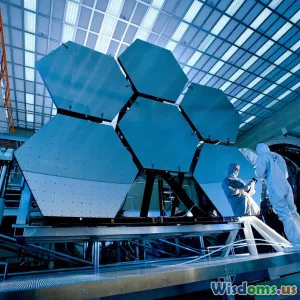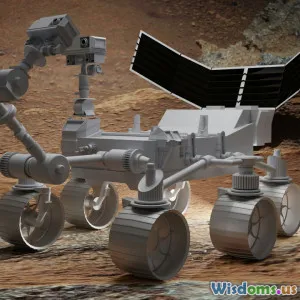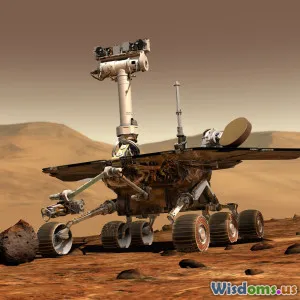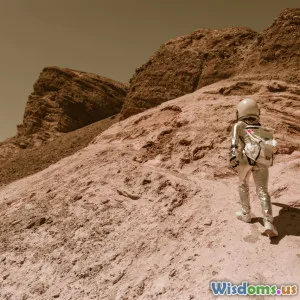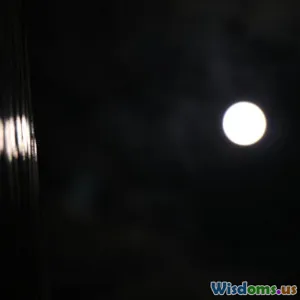
Why China Leads in Building Real World Sci Fi Lunar Bases
8 min read Explore why China is pioneering real-world sci-fi lunar bases with advanced technology, strategic vision, and international ambitions. (0 Reviews)
Why China Leads in Building Real World Sci-Fi Lunar Bases
The idea of establishing lunar bases has long existed in the realm of science fiction. For decades, illustrators, authors, and filmmakers imagined shimmering habitats on the Moon, filled with scientists, explorers, and even families living beyond Earth’s grasp. Today, this once-dreamlike concept is materializing, and China stands at the forefront of this next frontier. But what exactly enables China to lead in constructing these real-world sci-fi lunar bases? Let’s embark on an in-depth journey through scientific innovation, policy vision, and historic strides that position China as a global lunar pioneer.
The Vision Behind Lunar Bases: From Sci-Fi Dreams to Strategic Realities
Lunar bases are more than futuristic habitats; they're critical stepping stones toward deeper space exploration, resource utilization, and scientific discovery. Countries see lunar outposts as platforms for mining helium-3, experimenting with low-gravity biology, testing technologies for Mars missions, and demonstrating space sovereignty.
China’s space ambitions must be seen through its broader national strategy—positioning itself as a technological superpower by mid-21st century. The Moon offers both symbolic resonance and strategic potential, making lunar base development a keystone project.
Technological Advancements Driving China’s Lunar Base Initiatives
1. Lunar Rover and Robotic Missions
China’s Chang’e program launched the first Chinese robotic probes to the Moon, successfully completing landings and sample-return missions. In 2019, Chang’e 4 made history by performing a soft landing on the Moon’s far side — the first ever. This achievement showcased China's unparalleled capability in tackling challenging lunar terrains.
Moreover, rover Yutu-2 continues explorations with advanced instruments that gather dust, mineral, and environmental data essential for base construction. Lessons learned from these robotic pioneers reduce risks for future human habitats.
2. Advanced Space Habitats and Life Support Systems
China has heavily invested in closed-loop life support technologies. For instance, the Chinese Academy of Sciences developed advanced Controlled Ecological Life Support Systems (CELSS) that mimic Earth’s biosphere to sustain astronauts over extended durations—critical to long-term habitation on the Moon where resupply is expensive.
These technologies align with China's Tiangong space station modules, currently operational in Low Earth Orbit, testing experiments on crew endurance, microgravity agriculture, and environmental controls which are directly transferrable to lunar base environments.
3. Use of Lunar Resources: In-Situ Resource Utilization (ISRU)
Mining and utilizing lunar materials for oxygen, water, and building materials drastically reduce supply costs from Earth. China focuses intensely on ISRU, researching lunar regolith 3D printing technologies to construct durable, radiation-protected shelters. Since the Moon’s surface is exposed to cosmic rays and extreme temperature variations, employing local materials for bases is both practical and innovative.
Geopolitical and Economic Factors Accelerating China's Lunar Strategy
National Space Policy and Long-Term Planning
Unlike some space actors that operate in short mission bursts, China executes multi-decade space plans. Its China National Space Administration (CNSA) integrates lunar base goals within broader projects like Mars exploration, asteroid missions, and deep-space telescopes.
Notably, the "China Lunar Exploration Program" is segmented into clear, sequential phases from robotic exploration to manned missions and finally construction. This roadmap promotes steady progress and international credibility.
Significant Resource Allocation
China’s government channels substantial financial and human resources to space. While details remain partly confidential, estimates suggest China's space budget rapidly increased to approximately $9 billion annually—second globally only to NASA—fueling ambitious lunar endeavors.
The ability to orchestrate top-tier universities, private industries, and scientific institutions into focused lunar base projects enables China to synergize innovation efficiently.
International Collaboration and Competitive Dynamics
Selective International Cooperation
China’s lunar ambitions coexist alongside selective collaboration. With limited access to some Western technologies due to embargoes, China stretches its independent development while partnering with nations like Russia and European entities.
Plans for joint lunar missions and international lunar research stations reflect an openness to global collaboration, balancing competition with opportunity.
Positioning Against Global Competitors
The United States’ Artemis program aims to re-establish crewed lunar missions, with NASA planning lunar habitats by the late 2020s. However, political shifts and budget uncertainties contrast China's methodical approach.
Meanwhile, India's growing lunar activities and private space ventures contribute to a rejuvenated multi-polar lunar race, but China's technological dominance and strategic policies currently sustain a leadership position.
Real-World Examples Illustrating China's Leadership
-
Chang’e 5 Sample Return (2020): Successfully gathered and returned lunar soil, marking advancements toward building bases with firsthand geological insights.
-
Tiangong Space Station: Operational modular space station used for testing long-duration astronaut habitation and experimentations relevant to lunar living.
-
Lunar Research Station Proposal: China and Russia announced plans to build an international lunar research station, showcasing initiative and global ambition combined.
-
Development of Lunar Regolith 3D Printing: Academic institutions affiliated with CNSA have achieved breakthroughs in utilizing lunar soil simulants for constructing shelter prototypes.
Challenges Ahead: The Moon is Harsh and Competition Stiff
China excels but faces challenges such as extreme lunar night temperatures dropping to -173°C, intense solar radiation, and human health risks in low gravity environments. Overcoming these requires innovative shielding, energy storage, and medical technologies.
The geopolitical landscape also continuously shifts, requiring diplomacy and sustained funding.
Conclusion: A Sci-Fi Dream Becoming Earth-Shaking Reality
China’s leadership in building real-world sci-fi lunar bases blends visionary policy, cutting-edge technology, practical resource utilization, and strategic alliances. Their measured yet ambitious approach transforms futuristic concepts into tangible projects, edging humanity closer to an era where living and working on the Moon is routine.
This cosmic venture is more than prestige—it’s a foundation for humanity’s multi-planetary future. Observing how China shapes this domain can inspire governments, scientists, and space enthusiasts worldwide to rethink Earth’s place in the universe and our collective destiny among the stars.
As China's lunar bases rise, the science fiction of yesterday becomes the new frontier of tomorrow.
Rate the Post
User Reviews
Popular Posts










